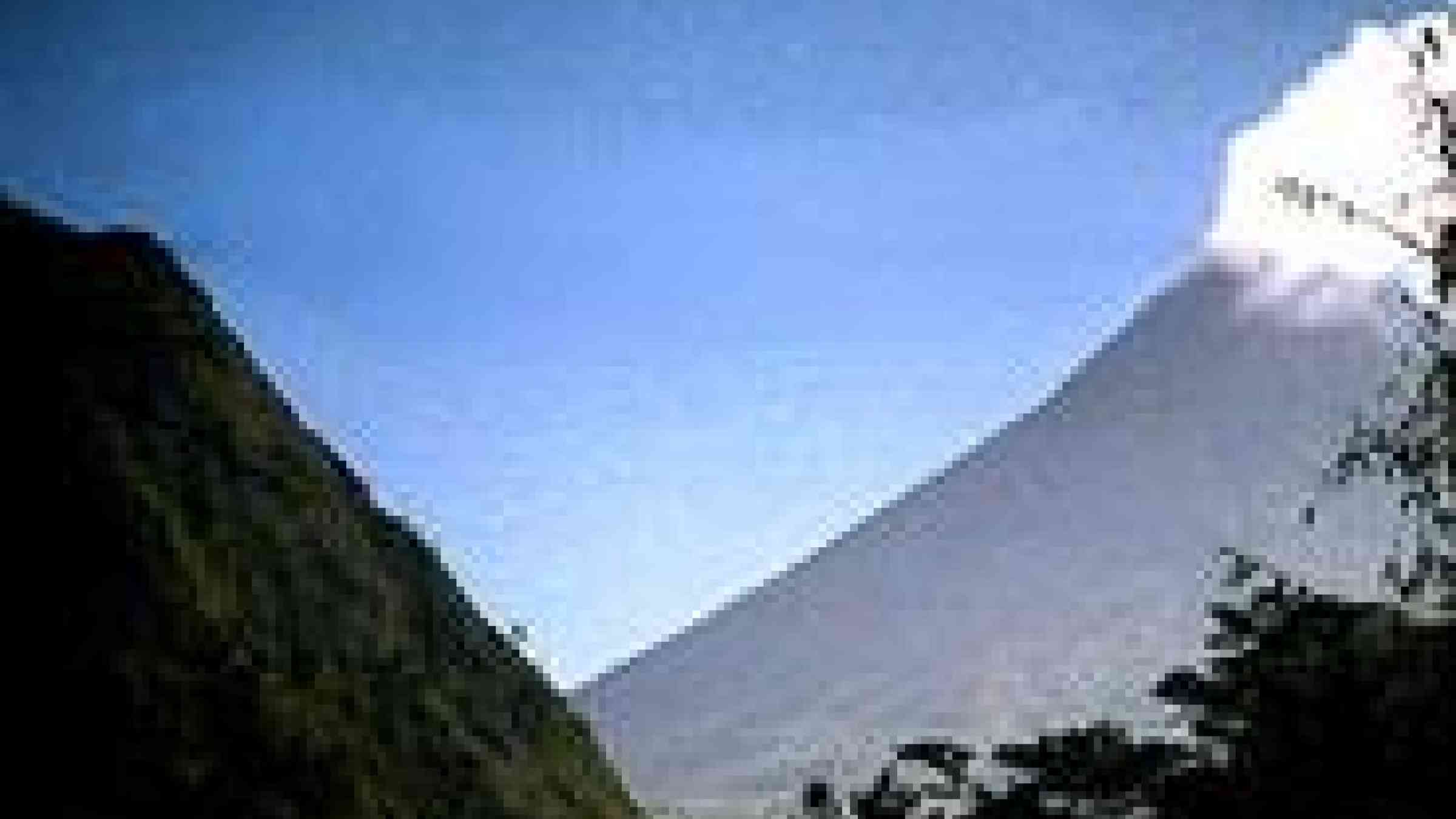Indonesia: Government to relocate volcano survivors

Jakarta - The Indonesian government looks set to relocate thousands of survivors of last year's deadly Mount Merapi volcano to safer locations, officials say.
Under a two-year project, Jakarta will provide land, housing, and money to more than 2,700 families whose villages were destroyed in the eruptions; build infrastructure and provide jobs, at an estimated cost of US$158 million, Syamsul Maarif, chairman of the country's National Disaster Management Agency (BNPB), told IRIN.
More than 13,000 people will benefit from the scheme, including residents of five villages in badly affected Cangkringan sub-district and one in Klaten District.
"With almost all the displaced having moved to temporary shelters, our focus now is how to rebuild communities affected by the disaster," Maarif said, adding that each household would be entitled to 100 sqm of land and 30 million rupiah ($3,500) to build a house.
Some residents, however, had objected to the relocation plan so they would be allowed to build houses near their previous neighbourhoods.
"We want to maintain community cohesiveness but at the same time be prepared for a future disaster," Maarif said.
"There must be an agreement that because they live in a place that has the potential to be affected by an eruption, they have to immediately evacuate when ordered to do so."
Thousands displaced
Merapi, one of the country's most active volcanoes, first erupted on 25 October 2010, sending jets of searing gas down its slopes. It continued erupting for a month, killing more than 300 people and driving 200,000 from their homes.
In January, floods caused by rainwater mixing with volcanic rocks and sands displaced hundreds, cut off roads and endangered six villages in Magelang District, 26km from the peak of Merapi.
Budi Hermanto, an activist working with Jalin Merapi, a group which helps coordinate aid for Merapi victims, said some 400 families displaced by the floods were still living in tents in three locations in Magelang District, Central Java.
"Even if their houses were not damaged, it's too dangerous for them to return because they live by the river and the land has been eroded," Hermanto said.
The Ministry of Public Works said it would start building 255 permanent houses for volcano survivors in Sleman District this year, while between 2012 and 2013 some residents would be financially assisted to build homes on their own.
"We hope the government will soon determine the danger zones and locations where houses will be built," said Budi Yuwono, a director-general at the ministry.
Maarif said most of the displaced had moved to temporary shelters in 11 locations in Yogyakarta and Central Java provinces.
In addition, as part of the reconstruction plan, the government will convert 1,310 hectares of land along the slopes of the volcano into protected forest or a national park, Maarif said.
Social Affairs Minister Salim Segaf al-Jufri said that the more than 13,000 people living in temporary shelters would also be provided a daily food allowance of 5,000 rupiah ($0.60) each for the next three to six months until they get back on their feet.
Those relocated will also be given cattle, seeds and saplings so that they can resume farming, said Maarif.
However, said Hermanto: "The government has promised to compensate for cattle killed in the eruptions but so far there has not been a settlement. Some work in the fields but others do odd jobs such as mining sand."
Located within the Pacific Ring of Fire, Indonesia is no stranger to volcanoes, earthquakes, and other natural disasters.
The archipelago nation - the fourth most populated - is home to at least 129 active volcanoes, 68 of which are classified as dangerous.
atp/ds/mw